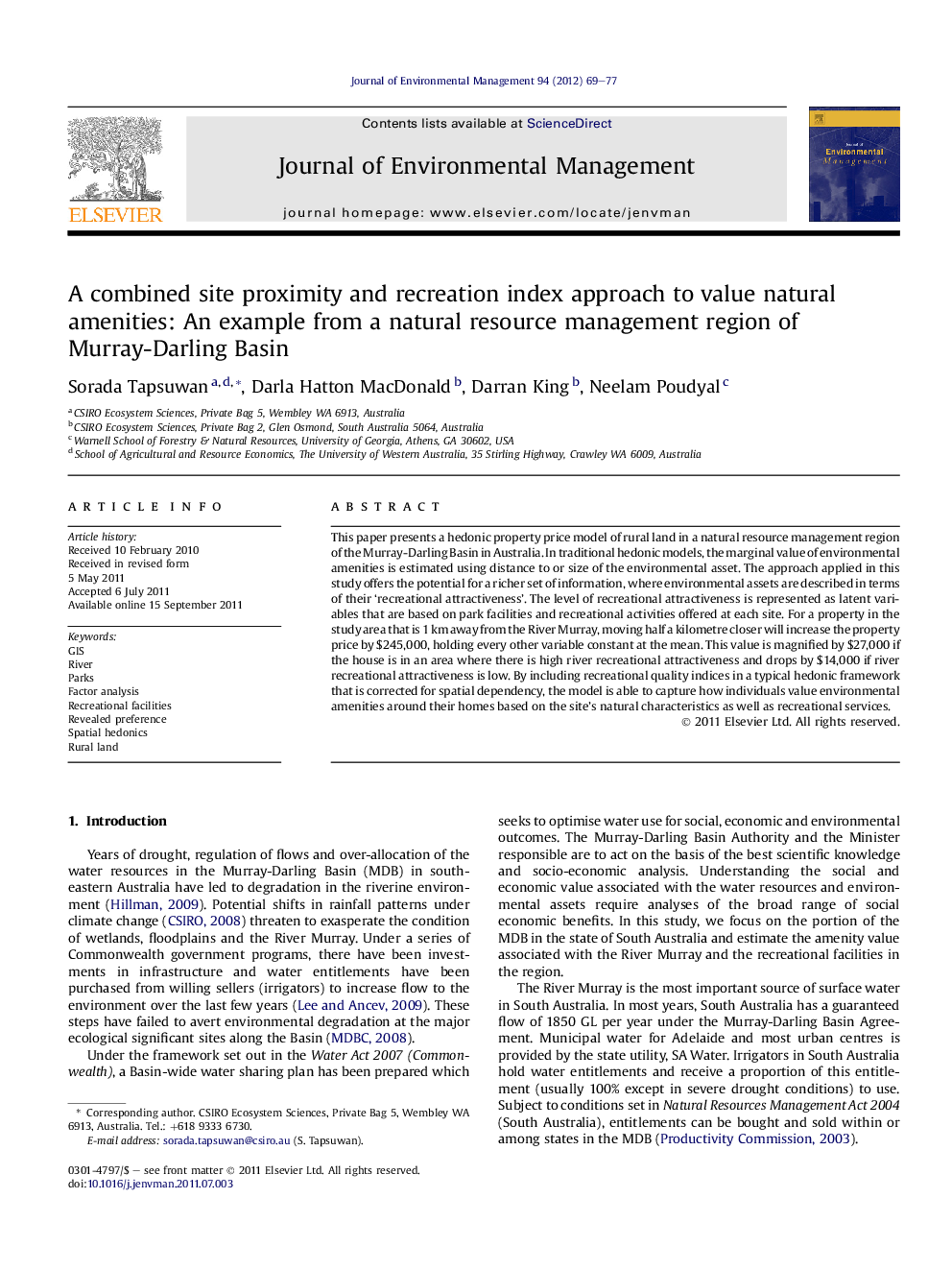| Article ID | Journal | Published Year | Pages | File Type |
|---|---|---|---|---|
| 1057091 | Journal of Environmental Management | 2012 | 9 Pages |
This paper presents a hedonic property price model of rural land in a natural resource management region of the Murray-Darling Basin in Australia. In traditional hedonic models, the marginal value of environmental amenities is estimated using distance to or size of the environmental asset. The approach applied in this study offers the potential for a richer set of information, where environmental assets are described in terms of their ‘recreational attractiveness’. The level of recreational attractiveness is represented as latent variables that are based on park facilities and recreational activities offered at each site. For a property in the study area that is 1 km away from the River Murray, moving half a kilometre closer will increase the property price by $245,000, holding every other variable constant at the mean. This value is magnified by $27,000 if the house is in an area where there is high river recreational attractiveness and drops by $14,000 if river recreational attractiveness is low. By including recreational quality indices in a typical hedonic framework that is corrected for spatial dependency, the model is able to capture how individuals value environmental amenities around their homes based on the site’s natural characteristics as well as recreational services.
► Spatial hedonic was applied to model the impact of environmental amenities on rural property price. ► Factor analysis was used to reduce park and river recreation characteristics into latent construct. ► Latent characteristic of park recreation predicts sales price better than proximity to park. ► Suggesting that traditional hedonic variables may not always apply.
